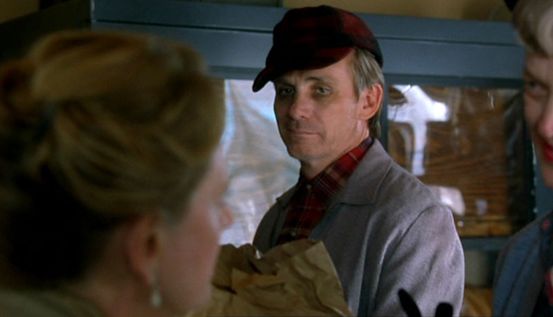After the gruesome discovery residents of Plainfield had
made when entering the house of Ed Gein, no one knew the genre of horror would
change forever. With Robert Bloch publishing his thriller novel "Psycho"
in 1959, Hollywood would end up taking the story and twisting it into various
iterations. Alfred Hitchcock's adaptation of Psycho (1960) of the same name
frightened many at the time. Skip a decade or so and Tobe Hooper would do the
same thing in The Texas Chain Saw Massacre (1974). Without Ed Gein or his
contorted history, the stories of horror, fans have today to enjoy would not
exist. It is unfortunate though that such events had to occur in order to
develop such iconic creations. Up until that point though nobody had really
made a movie based on the actual inspiration himself. Ed Gein had only been
written about prior and was still alive up until the mid 1980s. Putting a
production together that solely focused on the background / life of Ed Gein is
just as intriguing as the other popular horror movies.
 |
| Carrie Snodgress |
Or the deputy who arrested Gein was named Arch Sly, but here
his name is Sheriff Jim Stillwell (Pat Skipper). Even the way of which Gein's
disgusting hobby was discovered has a slightly altered telling as to what other
sources say. Perhaps director Chuck Parello modified these scenes to make it more
dramatic. But why - a true story is way more convincing. Aside from this, the
rest of the story execution is captivating enough. The subplot between Gein and
Mary Hogan (Sally Champlin) is fascinating. Parello even delves into what might
have happened to Ed's brother Henry (Brian Evers), since his death still
remains unknown. This is by far the best personification of the life of Ed Gein
in the most realistic fashion. From an upbringing with his religious mother, to
his plunging mental health on his own. After this movie, Johnston also wrote
for psychotic films like Bundy (2002) and The Hillside Strangler (2004).
Parello is best known for directing this feature and Henry II: Portrait of a
Serial Killer (1996).
Gein is displayed as a truly lost individual with no clear
sense of control or guidance. Steve Railsback as Ed Gein puts in the right
amount of effort to show how much he studied the role. Railsback brings the deranged
individual to life with quiet and restrained intent. There's enough to show
that there's something not all there. Railsback has been in several film
productions, his most famous being The X-Files and Lifeforce (1985). Carrie
Snodgress as Augusta Gein is even more convincing being that she was the force
that drove her son into lunacy. Citing biblical stories and forewarning her
sons of the dangers of sinful people. Snodgress was also in other films like Easy
Rider (1969) and Pale Rider (1985). The third actor that best fits the mold of
their character was Sally Champlin as Mary Hogan. Not only did she fit the
character visually but matched Hogan's described personality as well. All other
cast members within the film work well too but do not stand out because their
roles are not as prevalent.
 |
| "Don't I look purrty?" |
Being that this is an independent film, the visuals are not
as perfected but help paint the story. Some of the digital effects look lightly
rendered onto the picture, which isn't horrible but not great. There are
practical effects though for the skin / bone cannibal like activities that Gein
was interested in and what psychologists suspected. The cinematography shot by
Vanja Cernjul worked for the film. It wasn't filmed in a wide aspect ratio, but
it did get the needed shots in order to convey the correct atmosphere for how
Plainfield might have felt at the time. Cernjul was also the cinematographer to
American Psycho II: All American Girl (2002). For music, Robert McNaughton
composed the film score. For an unreleased film score the music does its job
efficiently. It's unfortunate that there was no main theme of any sort.
McNaughton also scored both Henry: Portrait of a Serial Killer (1986), its
sequel and is related to the director of the first; John McNaughton.
Points Earned --> 7:10
No comments:
Post a Comment